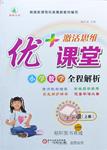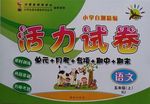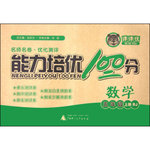题目内容
_____ of water makes Death Valley a desert, but it is by no means devoid.
A. Lacking B. Being lack
C. Because of lack D. Lack
D

 激活思维优加课堂系列答案
激活思维优加课堂系列答案 活力试卷系列答案
活力试卷系列答案 课课优能力培优100分系列答案
课课优能力培优100分系列答案Austin Children’s Museum
This 7,000-square-foot museum aims to entertain and educate children up to age 9. In its Global City exhibit, people can go shopping for groceries, order lunch at a diner, pretend that they’re doctors or construction workers, and more. In other fun exhibits, they learn about Austin’s history, explore the world of water, and experience life on a large Texas farm.
Open time: From Tuesday to Saturday, 10:00 a.m.~5:00 p.m.
On Sunday, 12:00 a.m.~5:00 p.m.
Address: 201 Colorado St, Austin, Texas 78701
Phone: 512-4722499
Brooklyn Children’s Museum
Founded in 1899, it is the world’s oldest children’s museum, featuring interactive exhibits, workshops, and special events. The Mystery of Things teaches children about cultural and scientific objects and Music Mix welcomes young virtuosos (名家).
Open time: From Wednesday to Friday, 2:00 p.m.~5:00 p.m.
On Saturday and Sunday, 10:00 a.m.~5:00 p.m.
Address: 145 Brooklyn Ave, Brooklyn, New York 1213
Phone: 718-7354400
Children’s Discovery Museum
This museum’s hand-on exhibits explore the relationships between the natural and the created worlds, and among people of different cultures and times. Exhibits include Streets, a 5/8-scale copy of an actual city, with streets lights, and waterworks, which shows how pumps can move water through a reservoir system.
Open time: From Monday to Saturday, 10:00 a.m.~5:00 p.m.
On Sunday, from noon. Closed on holidays.
Address: 180 Woz Way, Guadalupe River Park, San Jose, California 95110
Phone: 408-2985437
Children’s Museum of Indianapolis
This museum is the largest of its kind. Exhibits cover science, culture, space, history, and explorations. Among them are the Space Quest Planetarium (additional fee), the 33-foot-high Water Clock, the Playscape gallery for preschools, and the Dinosphere exhibit, along with hand-on science exhibits.
The largest gallery, the Center for Exploration, is designed for ages 12 and up.
Open time: From Tuesday to Sunday, 10:00 a.m.~5:00 p.m.
Closed on Thanksgiving Day and December 25.
Address: 3000 N Meridian St, Indianapolis, Indiana 46208
Phone: 317-3343322
1.Suppose that December 25 is Tuesday, which of the following museums can you visit?
|
A.Austin Children’s Museum. |
|
B.Brooklyn Children’s Museum. |
|
C.Children’s Discovery Museum. |
|
D.Children’s Museum of Indianapolis. |
2.If you want to see how pumps can move water through a reservoir system, you should visit the museum in _____.
|
A.Texas |
B.New York |
C.California |
D.Indiana |
3.After entering the museum you need to pay an additional fee to see _____.
|
A.the Center for Exploration |
|
B.the Space Quest Planetarium |
|
C.the Global City exhibit |
|
D.Waterworks |
4.Which of the following is not exhibited in Children’s Museum of Indianapolis?
|
A.culture |
B.history |
C.explorations |
D.special events |